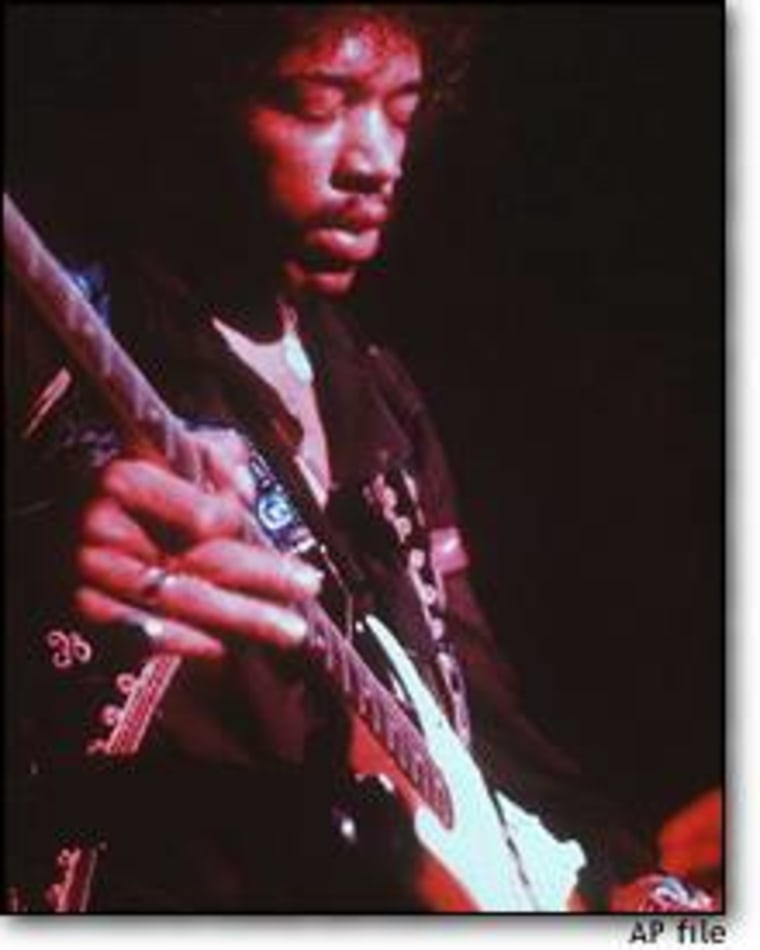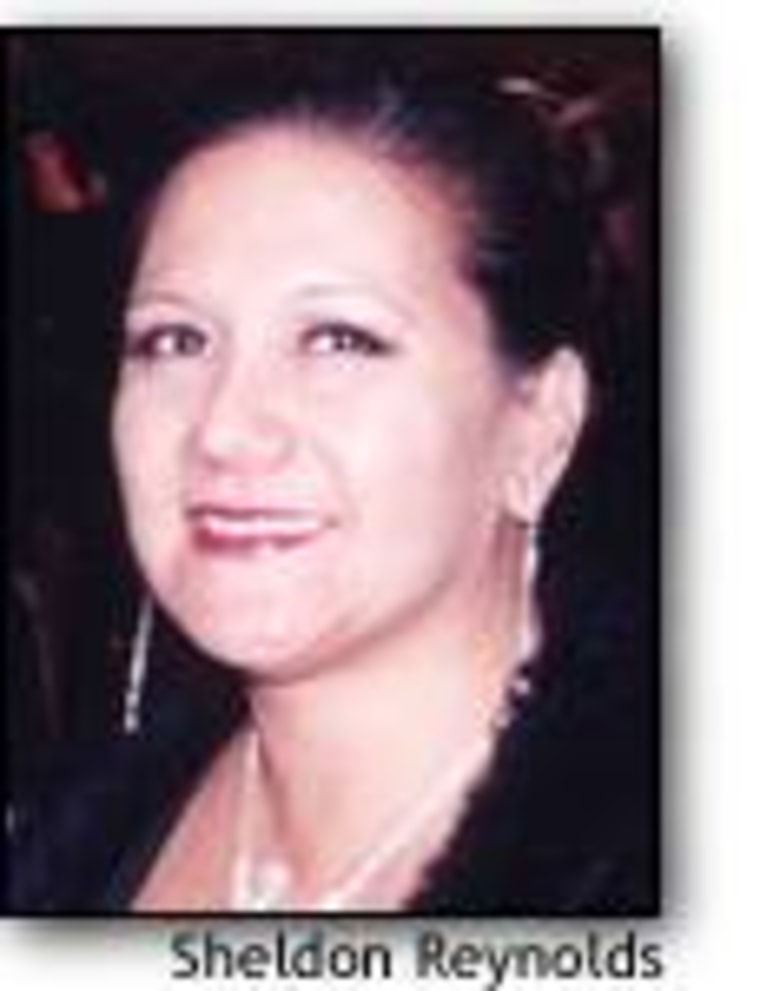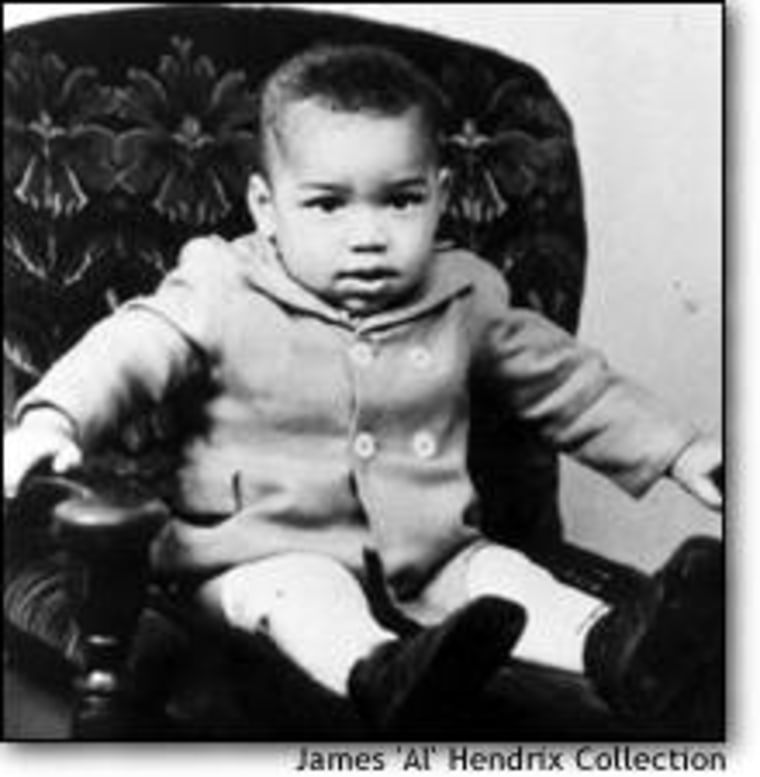Nearly 33 years after his death in London, at the height of his creative powers, the visionary rock guitarist Jimi Hendrix is unveiling another experience: an album of unreleased live Hendrix music is set to hit stores this fall — just one event in what’s shaping up to be a banner year for Hendrix fans.
Besides the live set, some of his classics will form the basis of a tribute album recorded by various top-shelf stars; a memorial is under construction near his hometown; and a museum largely inspired by the late guitar hero is soon to expand its collection of Hendrixiana.
New unreleased Jimi Hendrix music: for his legions of fans, the phrase itself gets the juices flowing. Janie Hendrix — Jimi’s half-sister, and the president and CEO of Experience Hendrix LLC, the Hendrix family company — seemed to recognize that recently, tantalizingly doling out hints in an interview. “It’s a live concert — I can’t tell you yet which concert it is,” she said, with an ebullient mischief you could hear over the phone. “There are some legal issues we’re dealing with.”
Janie Hendrix did say the album will include a performance from “part of his career with the Experience,” presumably the years between 1967 and 1969, during the apogee of his career with charter sidemen Noel Redding on bass and Mitch Mitchell on drums. The release will be out in this fall — “We’re aiming actually for October or November,” she said — and issued on the Experience Hendrix label, distributed by MCA/Universal. The pending release takes on a new historical resonance since Redding died earlier this month at his home in Ireland.
'Power of soul'
The new release of Hendrix originals will be just one manifestation of the Hendrix sound in 2003. A star-crowded tribute record, “Power of Soul,” will bring Hendrix classics before a new audience, many of whom weren’t around when Hendrix died of complications from a sleeping-pill overdose in September 1970, at the age of 27.

Janie Hendrix said the tribute album was largely inspired by a desire to recast the public understanding of Jimi Hendrix’s musical influences — to move beyond the perception of Hendrix solely as a rock musician. “There’s many tribute albums out, but we really wanted to give this an R&B flavor. He was blues- and jazz-inspired, and that’s what this album captured,” she said. “Every artist on it has been inspired by Jimi.”
The tribute record, whose release Janie Hendrix said “we’re looking at before Christmas,” includes Carlos Santana performing “Spanish Castle Magic,” funksters George Clinton and Bootsy Collins teaming up on the title track; Earth, Wind & Fire playing “Voodoo Chile,” and Jeff Beck joining forces with Seal on a version of “The Wind Cries Mary.”
The Hendrix classic “Red House,” one of Hendrix’s most forthright excursions into electric blues, will get two treatments on the disc: John Lee Hooker performs on a version recorded before his death in June 2001, and Prince checks in with a rendition (titled “Purple House” for the occasion).
Others to appear on the record will include Philly soul crooner Musiq, veteran R&B singer Chaka Khan, and former Band of Gypsys sidemen Buddy Miles and Billy Cox. Sales of the album are to benefit the United Negro College Fund.
Jimi before the beginning
Hendrix was one of rock’s most outrageous, extravagantly gifted talents, but the public’s knowledge of the late guitarist has rarely ventured beyond the flamboyant onstage persona that made him a legend, or the music that made him a household name. Starting June 7, the Experience Music Project (EMP) museum will mount an expansion of its most popular exhibit, one that intends to go beyond customary memorabilia to delve into the Hendrix mystique in its infancy — and very nearly his own.

The Seattle-based EMP is teaming with Experience Hendrix on “Jimi Hendrix,” an exhibition of Hendrix’s life that will for the first time include materials from Hendrix’s family and childhood, and material from the years before his fluid, inventive rock guitar style exploded on the London scene in 1966.
Images and artifacts from his childhood will be combined with a study of his music in the early stages of his career, and lesser-known aspects of Hendrix’s creativity.
Much of the EMP’s expanded exhibit got a well-received four-month trial run at Cité de la Musique in Paris. At that venue, “there were thousands of people who came out to see it, all were impressed and went away in awe,” Janie Hendrix said, with familial hyperbole. “That exhibit is just a small portion of what’ll be at EMP.”
Behind the spectacle
For Janie Hendrix, the unprecedented release of so much personal information was necessary to widen public understanding of the rock icon so few really knew.
“People think that he just ... appeared one day,” she said. “But he also had a history and a life, from birth to childhood to adolescence to adulthood. I think this shows the vital importance of his life and how he was, so that people can understand the other facets of Jimi.”
Included will be artifacts of Hendrix and family in an earlier, less celebrated life: letters written to his grandmother; artistic sketches that explore his fascination with the supernatural; letters and photographs from when the champion of pacifism was a paratrooper with the U.S. Army’s storied 101st Airborne Division; personal items from when he played the ‘chitlin circuit’ touring America as an unknown, and from his stints with Little Richard and the Isley Brothers.
The show looks at Hendrix’s work as a painter. “We’ve got paintings he did that he gave to his father, and some he entered into an art competition in high school,” said Jim Fricke, EMP curator. “They all give insight into his creative life and development,” he said.
For Fricke, a veteran rock writer and editor, the exhibit represents a chance to do “a more comprehensive job of telling the story, with more things our visitors will get a charge out of.” Speaking from under his curatorial hat, Fricke noted how “there’s always tension between architects and curators,” and said the Seattle museum — designed by the whimsically dramatic architect Frank Gehry — presented challenges of presentation.
“With a Gehry space, there’s no right angles,” he said. The Hendrix expansion will be part of fairly sweeping changes for the EMP as a whole. Fricke said that for museum visitors who haven’t stopped by in awhile — it opened in June 2000 — “it’s going to feel substantially different.”
Granite, marble, bronze
And there’s another long-awaited tribute, a lavish gesture of goodbye some have said is years overdue.

The final touches will soon be applied to a new Hendrix tomb, a project more than three years in planning and building. In November, Hendrix’s body was exhumed from a nondescript gravesite at Greenwood Memorial Park in Renton, Wash., maybe a dozen miles from Seattle, and reinterred in a vault in a new location on the site.
That vault will include a life-size bronze sculpture of the musician, a dome almost 30 feet high to be supported by granite columns accented in marble. “The memorial will be done probably this fall,” Janie Hendrix said.
To her way of thinking, the memorial is the outcome of efforts by Al Hendrix, Jimi’s father and the founder of Experience Hendrix. Al Hendrix, who died in April 2002 after a long bout with heart disease, had made it a mission to see that a proper tribute for his son was completed. “My father really wanted this done,” Janie Hendrix said. “The doctors were amazed that he lived the extra year he lived. He was really trying to hang on for the memorial to be done.”
Favorite son, sort of
Some have said Seattle’s relationship with its favorite rock and roll son has been fraught with coolness and an acknowledgement at arm’s length. In November the city of Seattle did take note of what would have been Hendrix’s 60th birthday. But to date there’ve been no streets or buildings named for him, and a few relatively minor statuary tributes: a bust and mural of the guitarist at Garfield High School, where he was a student, and a small statue in the city’s Capitol Hill district.
Charles Cross, a biographer of Hendrix and of Nirvana’s Kurt Cobain (another product of the Pacific Northwest), told BBC News last year the oversight by officialdom is “almost criminal.”
“The Seattle city government has never given any due to this man’s cultural legacy,” Cross told the BBC.
Janie Hendrix, though, has moved on, not inclined to bitterness over the matter. “There could always be more, but that’s not to diminish anything that has been done,” she said. “There are tributes in London, where Jimi basically established his name, and New York has Electric Lady Studios and still pays him homage. I’d like to see a street named after Jimi. That would be very cool.”